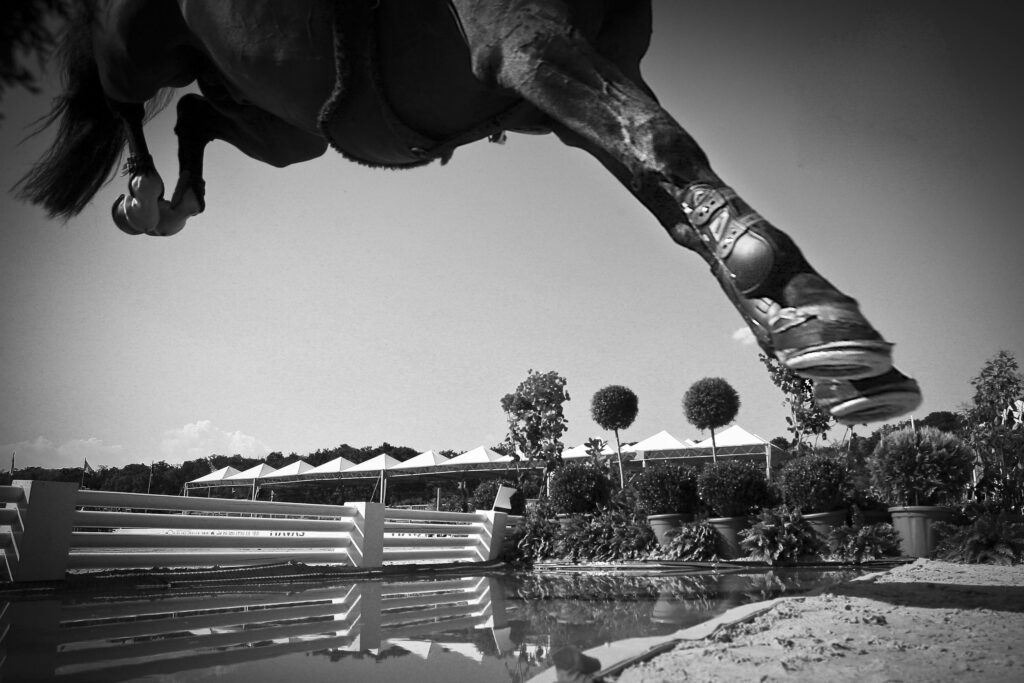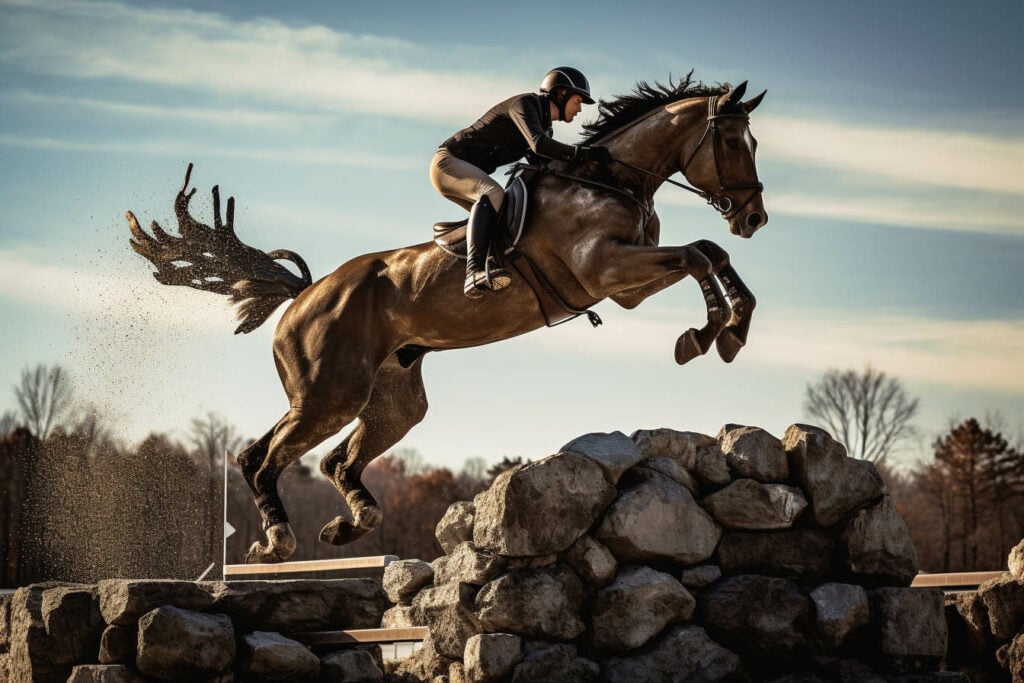Horse boots are a type of protective gear used to safeguard a horse’s legs from injuries while riding or working. These boots come in a variety of styles, materials, and sizes, and can be used for different purposes. Some horse boots are designed to provide support and stability to the horse’s legs, while others are meant to protect the legs from impact and abrasion.
Horse boots are an essential part of horse care, as they help prevent injuries and reduce the risk of damage to the horse’s legs. They are particularly useful for horses engaged in high-impact activities such as jumping, racing, or trail riding. Horse boots are also helpful for horses with weak or injured legs, as they provide additional support and cushioning. When choosing horse boots, it is important to consider the horse’s size, activity level, and specific needs, as well as the type and quality of the boots.
What are Horse Boots
Horse boots are protective gear designed to safeguard the horse’s lower legs and hooves while riding or during other activities. They come in different types, designs, and materials, each serving a specific purpose.
The primary function of horse boots is to prevent injuries, bruises, or scratches to the horse’s legs and hooves. They also provide support and stability to the horse’s legs, especially during intense physical activities such as jumping, racing, or trail riding.
Horse boots can be made of various materials, including leather, neoprene, nylon, and rubber. The choice of material depends on the intended use, durability, and comfort. Some horse boots feature additional padding or gel inserts to provide extra cushioning and shock absorption.
There are several types of horse boots, including:
- Open-Front Boots: These boots have an open front to allow the horse to feel the obstacles while jumping. They provide protection to the back of the horse’s legs.
- Splint Boots: These boots protect the horse’s splint bones, which are prone to injuries during intense activities.
- Bell Boots: These boots protect the horse’s hooves and coronet band from overreaching or stepping on themselves.
- Sport Boots: These boots provide overall protection to the horse’s legs and hooves during physical activities such as racing, barrel racing, or trail riding.
In conclusion, horse boots are essential protective gear for horses during riding or other physical activities. They come in different types and materials, each serving a specific purpose. It is important to choose the right type of horse boots for the intended use and ensure they fit properly to provide maximum protection and comfort to the horse.
Importance of Horse Boots
Protection
Horse boots are an essential piece of equipment for any horse rider. They provide protection to the horse’s legs during riding, jumping, or any other activity. The boots prevent injuries to the horse’s legs from the impact of jumping, kicking, or hitting obstacles. They also protect the horse’s legs from cuts, scrapes, and bruises that can occur during training or competitions.
Horse boots come in different styles and materials, including leather, neoprene, and synthetic materials. Some boots are designed for specific activities, such as jumping or dressage. It is important to choose the right type of boots for the horse’s activity level and needs.
Comfort
Horse boots not only protect the horse’s legs but also provide comfort. They can help prevent rubbing and chafing, which can cause discomfort and pain to the horse. The boots also provide support to the horse’s legs, reducing the risk of strain or injury.
When choosing horse boots, it is important to ensure they fit properly. Ill-fitting boots can cause discomfort and even lead to injury. The boots should be snug but not too tight, allowing for proper circulation and movement.
Performance
Horse boots can also improve a horse’s performance. By providing protection and comfort, the horse is less likely to be distracted or in pain during training or competitions. This can lead to better performance and results.
Some horse boots are designed to improve performance by providing additional support and stability to the horse’s legs. These boots can help prevent injuries and improve the horse’s movement and stride.
In conclusion, horse boots are an important piece of equipment for any horse rider. They provide protection, comfort, and can improve a horse’s performance. It is important to choose the right type of boots for the horse’s activity level and needs, ensuring they fit properly to prevent discomfort and injury.
Types of Horse Boots
Bell Boots
Bell boots are made of rubber or neoprene and are designed to protect a horse’s hooves and coronet bands from injuries caused by overreaching, where the horse’s hind foot strikes the front foot. They are typically worn during riding or turnout and come in various sizes, colors, and materials. Some bell boots have added features such as fleece lining for extra comfort or Velcro closures for easy on and off.
Brushing Boots
Brushing boots, also known as splint boots, are designed to protect a horse’s legs from injuries caused by brushing, where the horse’s legs hit each other during movement. They are typically made of neoprene or leather and come in various styles such as open-front or closed-front. Some brushing boots have added features such as gel padding for extra shock absorption or breathable materials to prevent overheating.
Overreach Boots
Overreach boots, also known as bell boots or strike pads, are designed to protect a horse’s front feet from injuries caused by overreaching, where the horse’s hind foot strikes the front foot. They are typically made of rubber or neoprene and come in various sizes, colors, and materials. Some overreach boots have added features such as reinforced strike pads for extra protection or Velcro closures for easy on and off.
Sport Boots
Sport boots, also known as tendon boots or fetlock boots, are designed to protect a horse’s legs from injuries caused by jumping or other high-impact activities. They are typically made of neoprene or leather and come in various styles such as open-front or closed-front. Some sport boots have added features such as gel padding for extra shock absorption or breathable materials to prevent overheating.
In conclusion, there are various types of horse boots available on the market, each designed for a specific purpose. It is important to choose the right type of boot for your horse’s needs and to ensure a proper fit to prevent discomfort or injury.
Choosing the Right Horse Boots
When it comes to choosing the right horse boots, there are a few important factors to consider. Properly fitted boots can help protect your horse’s legs from injuries and provide support during exercise. Here are some key considerations to keep in mind when selecting horse boots.
Size
One of the most important factors to consider when choosing horse boots is size. Ill-fitting boots can cause discomfort and even lead to injury. It’s important to measure your horse’s legs and choose boots that fit snugly but not too tight.
Material
Another important factor to consider is the material of the boots. Horse boots can be made from a variety of materials, including neoprene, leather, and synthetic fabrics. Each material has its own benefits and drawbacks, so it’s important to choose the right material for your horse’s needs.
Purpose
Finally, it’s important to consider the purpose of the boots. Different types of boots are designed for different activities, such as jumping, dressage, or trail riding. Some boots are designed to provide extra support, while others are designed to protect against impact. Consider the activities your horse will be engaging in and choose boots that are designed for that purpose.
By taking these factors into consideration, you can choose the right horse boots to help keep your horse safe and comfortable during exercise. Remember to always consult with a veterinarian or equine professional if you have any questions or concerns about your horse’s health or well-being.
Caring for Horse Boots
Cleaning
Proper cleaning of horse boots is essential to keep them in good condition and extend their lifespan. After each use, remove any dirt or debris from the boots using a soft brush or cloth. For tough stains, use a mild soap and water solution. Be sure to rinse the boots thoroughly to remove any soap residue.
Avoid using harsh chemicals or bleach, as this can damage the boots and compromise their effectiveness. Also, avoid putting the boots in the washing machine or dryer, as this can cause them to lose their shape and fit.
Storage
When not in use, store horse boots in a cool, dry place away from direct sunlight. Avoid folding or creasing the boots, as this can cause permanent damage. Instead, store them flat or hang them up using a boot hanger.
To prevent mold and mildew growth, make sure the boots are completely dry before storing them. If the boots become wet, allow them to air dry completely before putting them away.
Proper care and maintenance of horse boots will help ensure their effectiveness and longevity. By following these simple cleaning and storage guidelines, horse owners can help protect their investment and keep their horses safe and comfortable.
Potential Issues with Horse Boots
Improper Fit
Horse boots are designed to protect the horse’s legs from injuries, but if they do not fit properly, they can cause more harm than good. An improper fit can cause rubbing, chafing, and even restrict blood flow to the horse’s legs. It is essential to choose the right size and type of boot for your horse’s specific needs.
It is recommended to measure the horse’s leg circumference and the length from the fetlock to the knee or hock to ensure a proper fit. Some boots come with adjustable straps or padding to customize the fit. It is crucial to check the boots regularly to ensure they are not too tight or too loose.
Overuse
Another potential issue with horse boots is overuse. While boots can provide excellent protection, they should not be used excessively. Overuse can cause the horse’s legs to overheat, leading to inflammation and injury. Additionally, if the boots are not allowed to dry thoroughly between uses, bacteria and fungus can grow, leading to skin infections.
It is essential to follow the manufacturer’s recommendations for use and to monitor the horse’s legs for any signs of irritation or discomfort. It is also recommended to allow the horse’s legs to breathe and dry out after exercise by removing the boots and allowing the horse to stand in a dry and well-ventilated area.
In conclusion, while horse boots can provide excellent protection for your horse’s legs, it is essential to choose the right fit and use them appropriately to avoid potential issues. Regular monitoring and maintenance can help prevent any problems from occurring.
Famous Brands of Boots for Horses
When it comes to horse boots, there are several popular brands that riders and trainers trust to provide quality protection and support for their equine partners. Here are some of the most well-known brands in the industry:
Veredus

Veredus is a well-respected Italian brand that offers a wide range of horse boots for different disciplines. Their boots are known for their innovative designs and use of high-quality materials. Veredus offers boots for dressage, jumping, eventing, and more.
LeMieux
LeMieux is a British brand that has gained popularity in recent years for their stylish and functional horse boots. Their boots come in a variety of colors and patterns, making them a favorite among fashion-conscious riders. LeMieux offers boots for dressage, jumping, and general riding.
Zandona
Zandona is an Italian brand that specializes in protective horse boots. Their boots are designed to provide maximum protection for horses during high-impact activities like jumping and eventing. Zandona’s boots are known for their durability and innovative design features.
Horze
Horze is a Finnish brand that offers a wide range of equestrian products, including horse boots. Their boots are designed with both style and function in mind, and are available in a variety of colors and patterns. Horze offers boots for dressage, jumping, and general riding.
Eskadron
Eskadron is a German brand that has been around since the 1970s. They are known for their high-quality horse boots that provide excellent protection and support. Eskadron offers boots for dressage, jumping, eventing, and more.
Kentucky
Kentucky is a Belgian brand that offers a range of equestrian products, including horse boots. Their boots are designed with the horse’s comfort in mind, and are made from high-quality materials. Kentucky offers boots for dressage, jumping, and general riding.
Overall, these brands are trusted by riders and trainers around the world for their quality and innovation in horse boot design.
Frequently Asked Questions
What are the different types of horse boots available?
There are several types of horse boots available, including open-front boots, splint boots, bell boots, and more. Each type of boot is designed to protect different areas of a horse’s leg.
How do horse boots protect a horse’s legs?
Horse boots provide a layer of protection between a horse’s leg and the ground or other objects. They can help prevent injuries from impact, rubbing, and other types of trauma.
Are horse boots necessary for jumping?
While horse boots are not always necessary for jumping, they can provide an extra layer of protection for a horse’s legs. Jumping can put a lot of stress on a horse’s legs, so boots can help prevent injuries.
What should I consider when choosing horse boots?
When choosing horse boots, it’s important to consider the type of boot that will best protect the areas of a horse’s legs that are most vulnerable. It’s also important to choose boots that fit properly and are comfortable for the horse.
Can horse boots be worn during turnout?
Horse boots can be worn during turnout, but it’s important to choose boots that are designed for this purpose. Turnout boots should be durable and able to withstand the rigors of outdoor activity.
How do I properly fit horse boots?
To properly fit horse boots, it’s important to measure a horse’s legs and choose boots that fit snugly but are not too tight. Boots that are too loose can slip and cause rubbing, while boots that are too tight can restrict circulation and cause discomfort.

